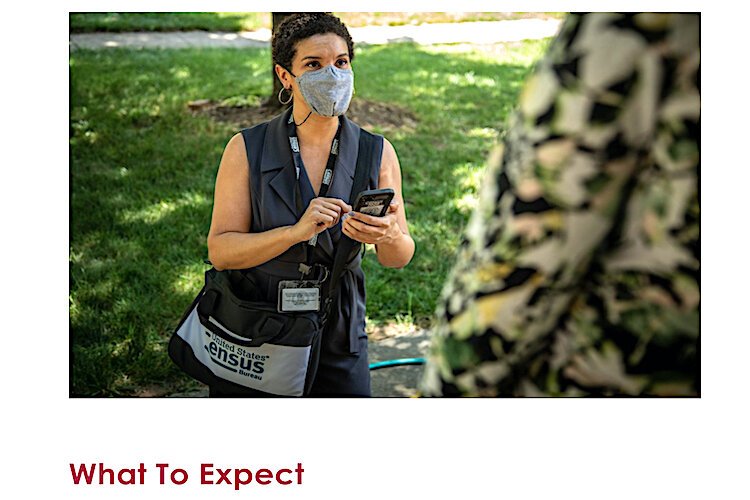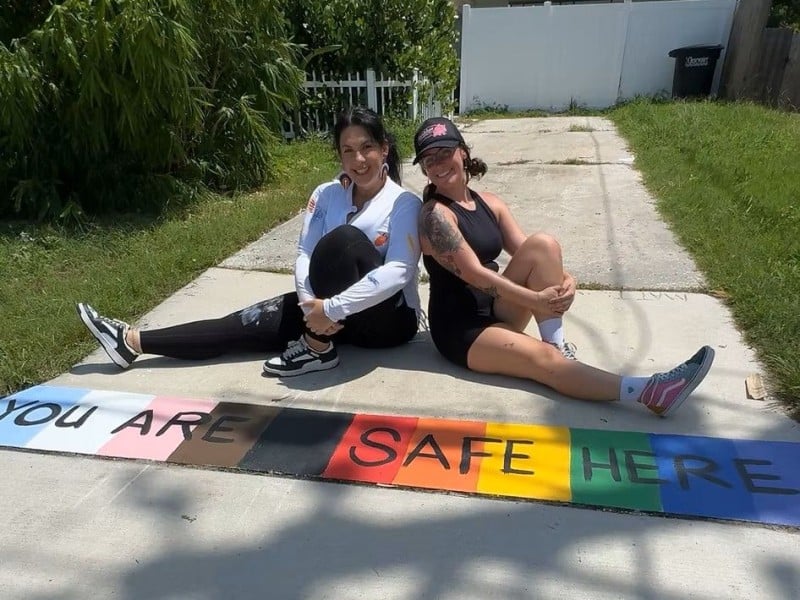Census 2020: 2 out of 5 households in Florida have yet to respond
Filling out your household's response to Census 2020 has never been easier. And, because of the disruption in our lives caused by COVID-19, it's never been more important for understanding the demographics of our communities, setting public policy, and distributing resources. #justdoit

If you haven’t already filled out Census 2020 forms on paper, online, or by telephone, now would be a good time to do it while you’re hanging out at home during the coronavirus outbreak.
Only about 59 percent of Florida households had filled out the Census paperwork online or in-person by the end of July, lagging the nation’s response rate of about 63 percent. The rate of completion so far in Hillsborough: 61 percent; in Tampa: 59 percent; in Pinellas: 63 percent; in St. Petersburg: 62 percent; in Clearwater: 58 percent.
That means approximately two out of every five households have yet to respond.
Census takers will begin visiting non-responding households across Florida and the nation in mid-August. Responding now minimizes the need, cost, and risk for census takers to visit homes to collect responses in person.
Why does it matter?
Demographers, sociologists, and economists across Florida and in the Tampa Bay Area are eager to analyze the raw data that will be used to determine how much federal funding comes this way as well as where we stand in relation to other states, much as has been done every 10 years since the first nationwide census in 1790.
Florida’s headcount will reveal not only how many people live in cities like Tampa, St. Petersburg, and Clearwater and the surrounding suburban and rural areas, but it will also provide more detailed information on a variety of other population characteristics, including age, household income, who is employed (as of April 1), and what types of jobs these individuals hold.
Since the previous headcount in 2010, the United States, Florida, and the local region have endured major shifts in employment following the end of the Great Recession, the rise of technology, and growth in urban areas.
The Great Recession in Florida, of course, took a huge toll on real estate, tourism, retirement plans, and so much more. Many people in the housing and related sectors lost their jobs. Others, particularly those with two to three decades of workforce experience ended up calling it quits altogether, taking early retirement or cashing out their savings.
And now coronavirus. Temporary layoffs and unemployment; lower household incomes; people moving out of Florida as much as into the state. The census numbers will tell the story.
What will the future hold? Sometimes a look at the past can be predictive of the future.
History shows that when an economy goes down, it usually comes back, often sooner rather than later. A decade after the start of the Great Recession, Florida and the Tampa Bay Area had been booming — right up until earlier this year and the onset of COVID-19.
According to figures from the Federal Housing Finance Agency, home prices in Tampa increased an average of 5.2% in 2019 alone, and that’s just the latest growth in a long run of positive movement in the local housing market now going back several years.
A 2018 report by the U.S. Department of Housing and Urban Development (HUD) shows prices for existing homes in the Tampa Bay Area had essentially recovered their pre-recessionary high of $252,600 in 2007. When local home prices bottomed out around 2011, the average price for an existing home in the Tampa Bay Area was $159,000.
As of March 2020, average home sale prices in the area were heading right back into the mid $200s, with real estate website Zillow reporting the median home price in Tampa at $245,262, while typical homes in St. Petersburg and Clearwater were selling for $230,061 and $229,354, respectively.
“In the current market, homes and commercial spaces are going very quickly,” Mary Ann Yaney, business development officer at Keystone Title Agency, Inc., said then. “If buyers hesitate, there’s another person right behind them ready to sign a contract. We’re seeing fewer contracts with seller concession than a few months ago, and the inventory is very low.”
Overall then and now, Yaney says it is becoming more difficult to find “affordable” homes in the Tampa Bay Area. “If folks can’t find what they want in the existing home market, they’ll purchase new construction. And home builders are working to create more affordable homes — not bringing down the prices of their current construction but rather constructing less-expensive homes.”
According to Forbes, more than half of homebuyers can’t afford the national median price of a home, standing at about $300,000.
“[Builders] must do something to keep up with the demand of more affordable homes,” Yaney remarks.
Building the numbers
With a highly competitive market for existing homes and many buyers turning to new homes, the construction industry has continued to hum. And it’s not just sales of new homes and renovations for existing homes that are keeping Tampa Bay’s construction crews busy. They’re also tackling major expansions at AdventHealth Tampa and James A. Haley Veterans’ Hospital in Tampa and building several landmark legacy projects, including Water Street Tampa, Midtown Tampa, Uptown Tampa, and the new St. Pete Pier.
And the new work is helping bring many people back into the building industry, which employs a range of professionals, including masons, plumbers, electricians, carpenters, general contractors, architects, and developers. In many cases, construction hires are leaving previous employment from other sectors in a trend that the United States Census Bureau has been tracking in their Job-To-Job Flow (J2J) data.
According to the Census Bureau J2J tool, during the first quarter of 2018 — the most recent period for which the Census Bureau offers this information — approximately 5,700 individuals had left other industries to begin new employment in the construction trades in the Tampa Bay Area. Looking over the previous three years of data, that figure is more than 25% higher than during the second quarter of 2015, when approximately 4,500 individuals made a similar employment leap.
The increasing employment in the construction industry is seen as an opportunity to get more people into these promising and lucrative jobs. Local educational institutions such as Hillsborough Community College, St. Petersburg College, and Erwin Technical College are offering courses and programs in everything from plumbing and welding to architectural drafting and engineering. And while these programs are attracting a large number of men — many of whom have no prior experience in the trades – an unprecedented number of women are also enrolling in and graduating from these programs, changing the face of an industry that has been traditionally and overwhelmingly male-dominated.
“Currently women comprise only a small percent of the construction workforce, about 10 percent,” says Ann W. Madsen, Executive Director of The Helen Gordon Davis Centre for Women. “Even smaller is the number of women who work on job sites. Traditionally, it has been a very male-dominated industry, but that is shifting.”
Some 2 million jobs are expected to be created in the construction industry by next year, and Madsen says companies are hoping to recruit more women.
“Research indicates that women are expected to make up 46.8% of the industry by 2022,” she says. “Right now, 76% of women in construction work in the office section and 13% of construction firms are owned by women.”
Women Building Futures
Madsen and her team at The Helen Gordon Davis Centre for Women are hoping to level the playing field by offering Women Building Futures, a 15-week curriculum-based program established in 2014 that teaches women trades that include painting, masonry, carpentry, drywall, and flooring as well as offering courses in construction administration. The program, funded by Hillsborough County Community Development, has seen 130 women graduate from the program that is accredited by The National Center for Construction Education and Research (NCCER); these graduates earn an NCCER blue wallet card and OSHA 10 certification from the Occupational Safety and Health Administration.
“It has been amazing,” Madsen says of the program. “We discovered that there was high interest in this program from women who wanted to pursue a career in the trades as well as others who simply wanted to have a better understanding of construction techniques. We were delighted to have it funded by Hillsborough County initially and last year partnered with Enterprising Latinas and HCC Southshore.”
She notes they also have had excellent support from the National Association of Women in Construction Tampa Chapter 36, Painters on Demand, Avery Construction Design Consulting, Inc., and other organizations. Madsen says the women coming through the program represent diverse backgrounds.
“Surprisingly, we are seeing a cross-section of women, some younger and others ready to make a career change on a path that leads to greater opportunities and economic prosperity,” Madsen observes. Many graduates have gone on to land successful careers in construction. “And at least one has started her own painting company after taking our course.”
Read previously published stories about Census 2020:
- Make it count: How Census 2020 benefits the Tampa Bay Area
- Everyone counts: Census 2020 data will drive new opportunities, investments in Tampa Bay
For more information:
- How to fill out the Census? Follow this link: U.S. Census 2020
- Or call anytime between 7 a.m. and 2 a.m. to one of the numbers listed here to respond in English, Spanish, or one of several different languages.
- Curious about your state, county, or city response rate? Visit the Census Bureau’s online map.













